Community members and advocates in Nashville, Tennessee, installed two historical markers in downtown Nashville yesterday to remember four men who were lynched there during the era of racial terror.
Yesterday at noon, Mayor David Briley and members of the city council gathered with community members, local organizers, and EJI staff to dedicate two historical markers. One marker memorializes Henry Grizzard and Ephraim Grizzard, brothers who were violently hanged and killed by white residents of Davidson and Sumner counties on April 24 and April 30, 1892. The other marker recognizes David Jones and Jo Reed, victims of pre-1877 racial terror lynchings.
In collaboration with Nashville’s Juneteenth Celebration and with support from Black Lives Matter Nashville, the forum and marker dedication ceremony were organized by the Metropolitan Nashville Davidson County Community Remembrance Project Coalition (“We Remember Nashville”), which was formed to promote community awareness, education, and public reckoning around racial terror in Nashville through partnership with EJI and local stakeholders.
The dedication ceremony was preceded by an educational forum Tuesday night on public memory. Held at the Nashville Public Library, the forum featured the winners of EJI’s Racial Justice Essay Contest and an interactive panel on the topic, “We Remember: The Power of Memory and Movement.”
First place winner, Princess Duncan, is a senior at Republic High School. In fifth place was Chavis-Fielder Holistic Homeschool Senior Freda Fielder; fourth place went to James Duncan, a senior at Republic High; LaKira Floyd, a freshman at Hume Fogg Academic Magnet High School, won third place; and in second place was Monika Naguib, a junior at Cane Ridge High School. EJI awarded the essay contest winners $5000 in scholarships.
Lynching in Davidson County
After the Confederacy’s defeat, the Thirteenth, Fourteenth, and Fifteenth Amendments to the United States Constitution ended slavery and guaranteed newly emancipated Black people constitutional rights of citizenship. Reconstruction promised federal enforcement and challenged the prior racial caste system created during slavery.
But even before federal protection ended in 1877, thousands of African Americans were victims of racially- and politically-motivated massacres, murders, and lynchings, especially in the South. Racial terror lynching, in particular, claimed the lives of many African Americans who advocated for equal rights, resisted economic exploitation, or were accused of crimes or perceived violations of racial customs.
Lynch mobs regularly displayed complete disregard for the legal system, abducting Black people from courts, jails, and out of police custody. Law enforcement officials often failed to intervene and sometimes participated in mob violence.
At least six people were victims of racial terror lynchings in Davidson County.
On March 25, 1872, a white mob forcibly removed a Black man named David Jones from the Davidson County Jail in downtown Nashville, shot him twice, and hanged him from a lamp post in Public Square. Though police officers cut Mr. Jones down and dispersed the crowd, he died from his injuries.
On the night of April 30, 1875, a mob abducted another Black man, Jo Reed, from the jail and dragged him to the nearby suspension bridge, at the current site of the Woodland Street Bridge. In front of a large crowd of onlookers, Mr. Reed was shot multiple times in the head and hanged from the bridge. His body was abandoned to the Cumberland River after the rope broke and he fell into the water below.
On April 24, 1892, two Black men were accused of assaulting two white women near Goodlettsville. Two brothers, Henry and Ephraim Grizzard, were arrested, along with three other Black men. During this era, the deep racial hostility that permeated Southern society burdened Black people with a presumption of guilt that often focused suspicion on Black communities after crimes were alleged, whether evidence supported that suspicion or not.
Without a trial, Henry Grizzard was lynched the next day by white residents of Davidson and Sumner County at Mansker’s Creek. His brother Ephraim was taken to Nashville’s jail to await trial. On April 30, leaders of an angry white mob violently abducted him from the jail and hanged him from the Woodland Street Bridge before shooting hundreds of bullets into his body.
Thousands of “well-to-do, respectable citizens” supported lawless mob violence that threatened the Black community. Ephraim Grizzard’s body was taken back to Goodlettsville, where it was burned publicly to further terrorize Black residents. Black community members who protested about racial terror lynchings were themselves threatened with violence and forced to flee.
Each lynching in Davidson County created trauma and pain, while reinforcing white supremacy and denying African Americans their basic rights.
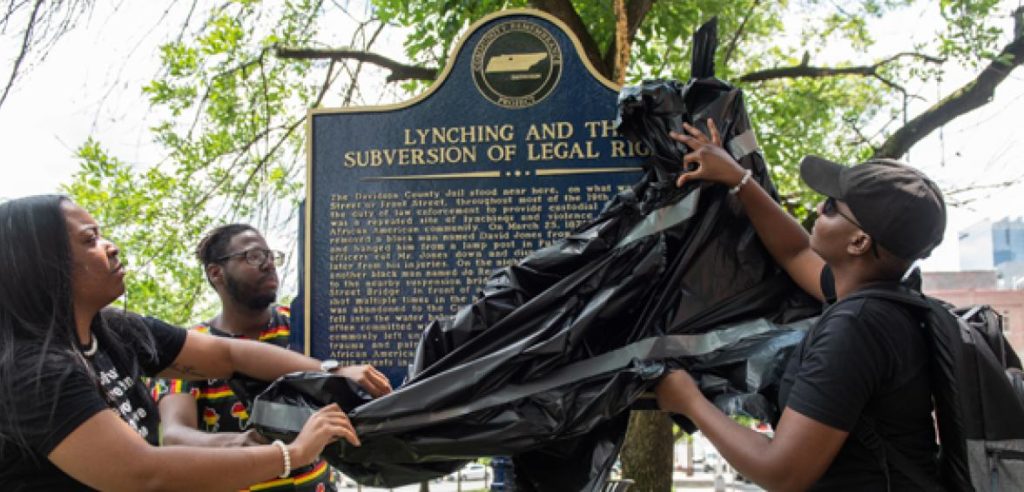
/
Brittany Paschall and Leea allen unveil the first marker acknowledging lynching in Davidson County.

/
EJI’s Breana Lamkin explains the history of racial terror lynchings.
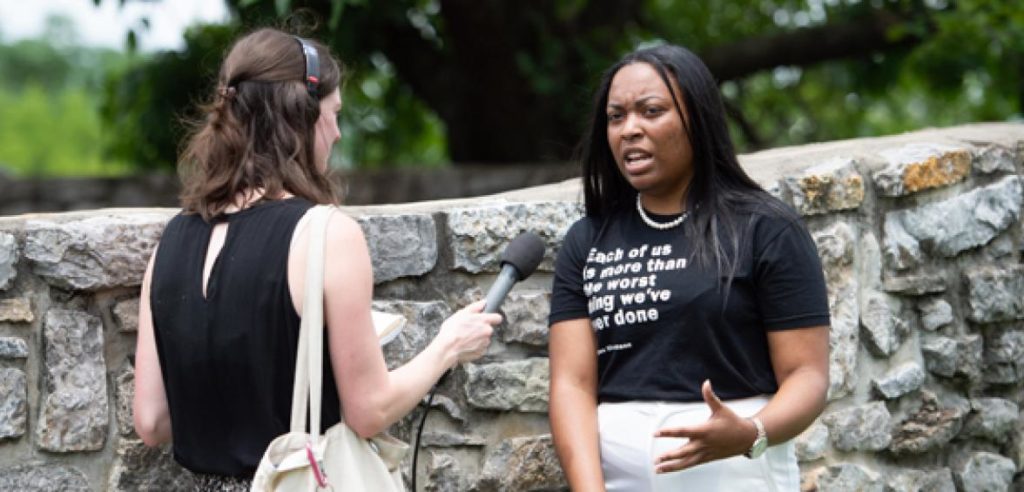
/
“We Remember Nashville” organizer Brittany Paschall speaks with NPR reporter.
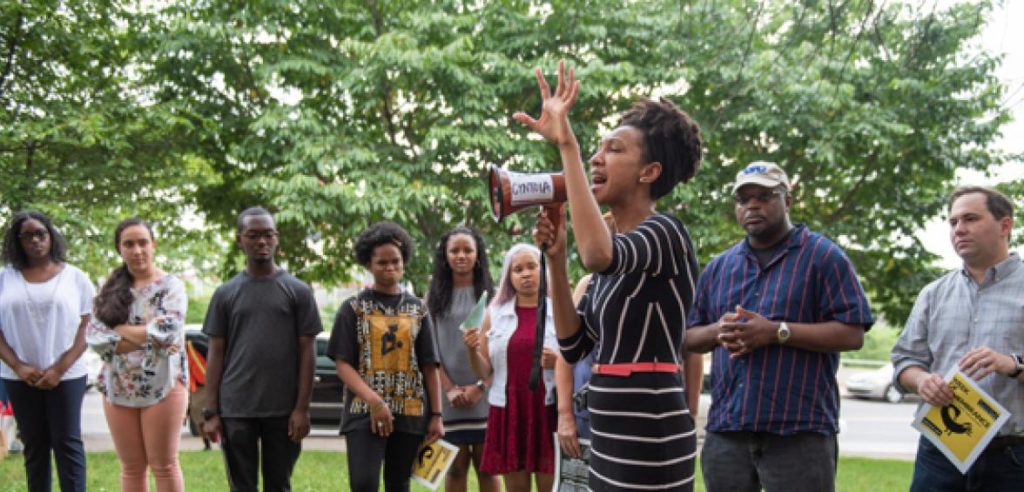
/
EJI’s Gabrielle Daniels discusses Community Remembrance Project.
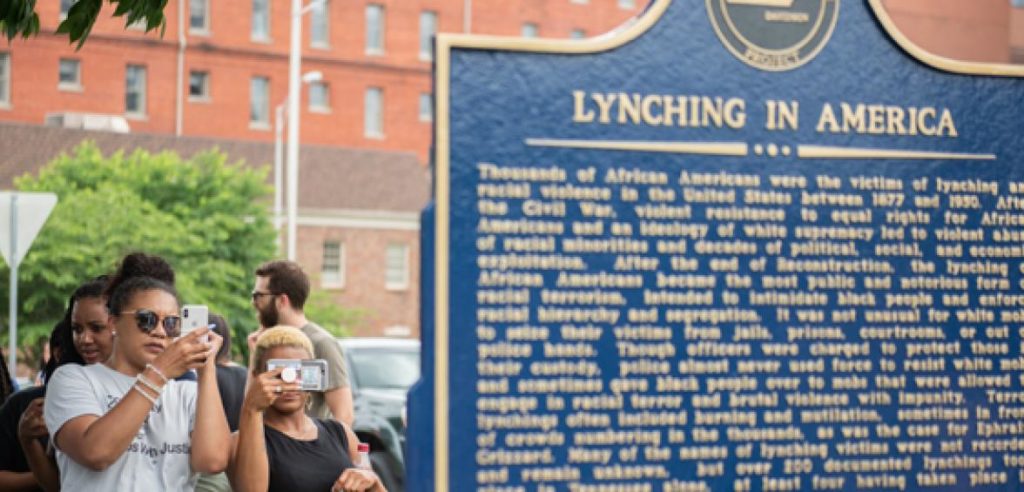
/
Community members take photos of the marker.
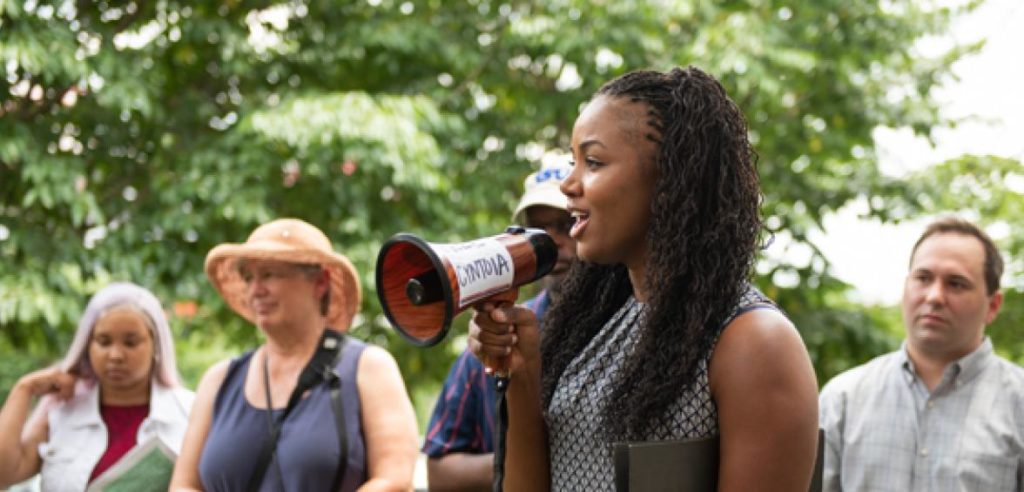
/
EJI’s Sade Stevens explains the importance of confronting our history of racial injustice.
EJI’s Community Remembrance Project
EJI’s Community Remembrance Project is part of our campaign to recognize the victims of lynching by collecting soil from lynching sites, erecting historical markers, and developing the National Memorial for Peace and Justice, which acknowledges the horrors of racial injustice.
As part of its effort to help towns, cities, and states confront and recover from tragic histories of racial violence and terrorism, EJI is joining with communities to install historical markers in communities where the history of lynching is documented. EJI believes that by reckoning with the truth of the racial violence that has shaped our communities, community members can begin a necessary conversation that advances healing and reconciliation.
Lynching in America
Thousands of Black people were the victims of lynching and racial violence in the United States between 1877 and 1950. The lynching of African Americans during this era was a form of racial terrorism intended to intimidate Black people and enforce racial hierarchy and segregation.
Lynching was most prevalent in the South, including Alabama, Arkansas, Florida, Georgia, Kentucky, Louisiana, Mississippi, North Carolina, South Carolina, Tennessee, Texas, and Virginia. After the Civil War, violent resistance to equal rights for African Americans and an ideology of white supremacy led to violent abuse of racial minorities and decades of political, social, and economic exploitation.
In an expanded edition of Lynching in America, EJI also documented racial terrorism beyond Southern borders, detailing more than 300 lynchings of Black people in eight states with high lynching rates in the Midwest and the Upper South, including Oklahoma, Missouri, Illinois, West Virginia, Maryland, Kansas, Indiana, and Ohio.
Lynching became the most public and notorious form of terror and subordination. White mobs were usually permitted to engage in racial terror and brutal violence with impunity. Many Black people were pulled out of jails or given over to mobs by law enforcement officials who were legally required to protect them. Terror lynchings often included burning and mutilation, sometimes in front of crowds numbering in the thousands.
In response to this racial terror and violence, millions of Black people fled the South and could never return, which deepened the anguish and pain of lynching. Many of the names of lynching victims were not recorded and will never be known, but EJI has documented more than 200 lynchings of Black people in Tennessee alone, including Edward Johnson, Albert Blount, Charles Williams, and Charles Brown, who were lynched in Hamilton County, Tennessee, and memorialized in a Community Remembrance Project event in Chattanooga.